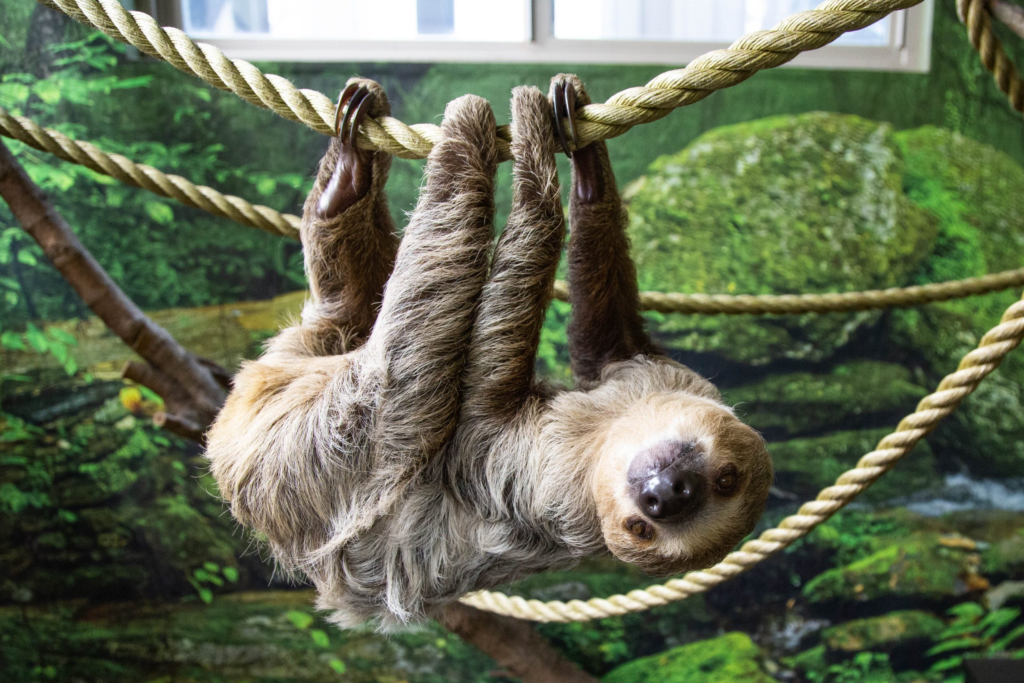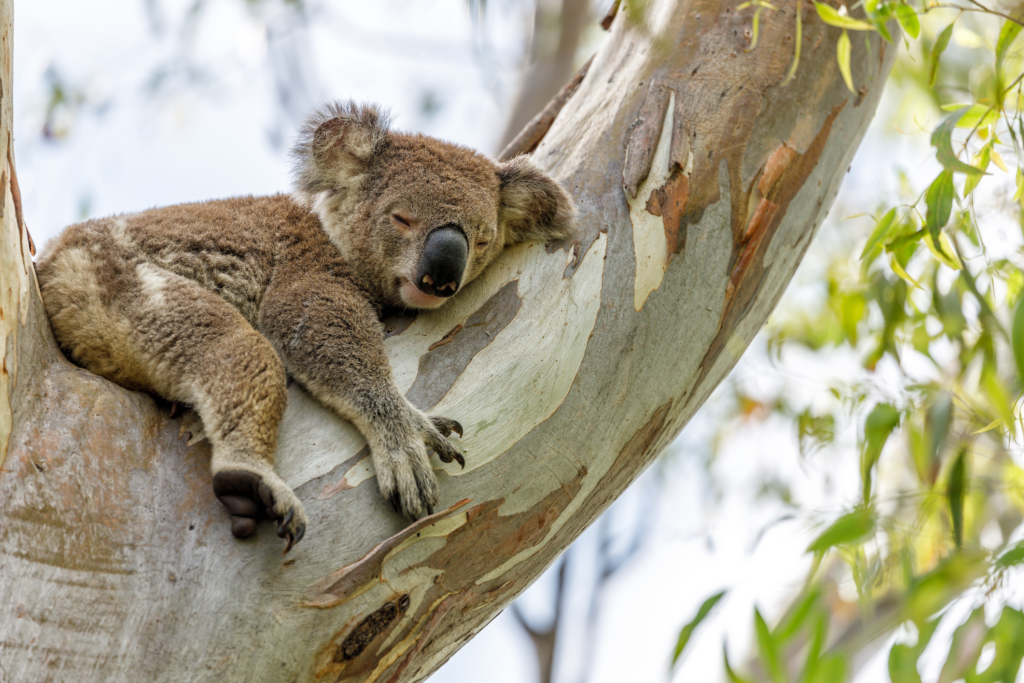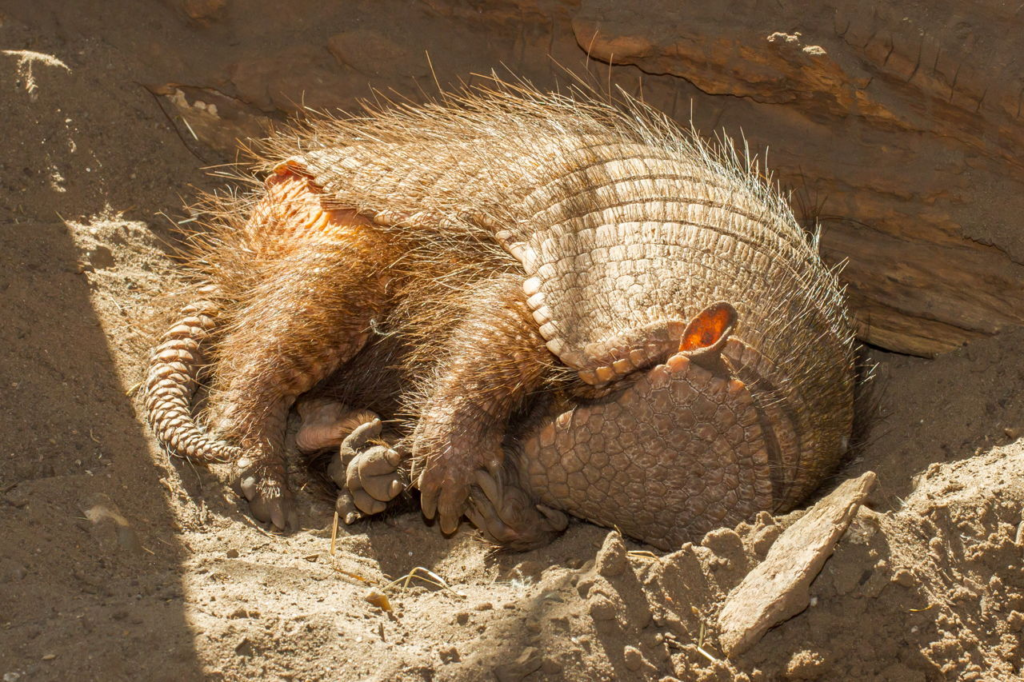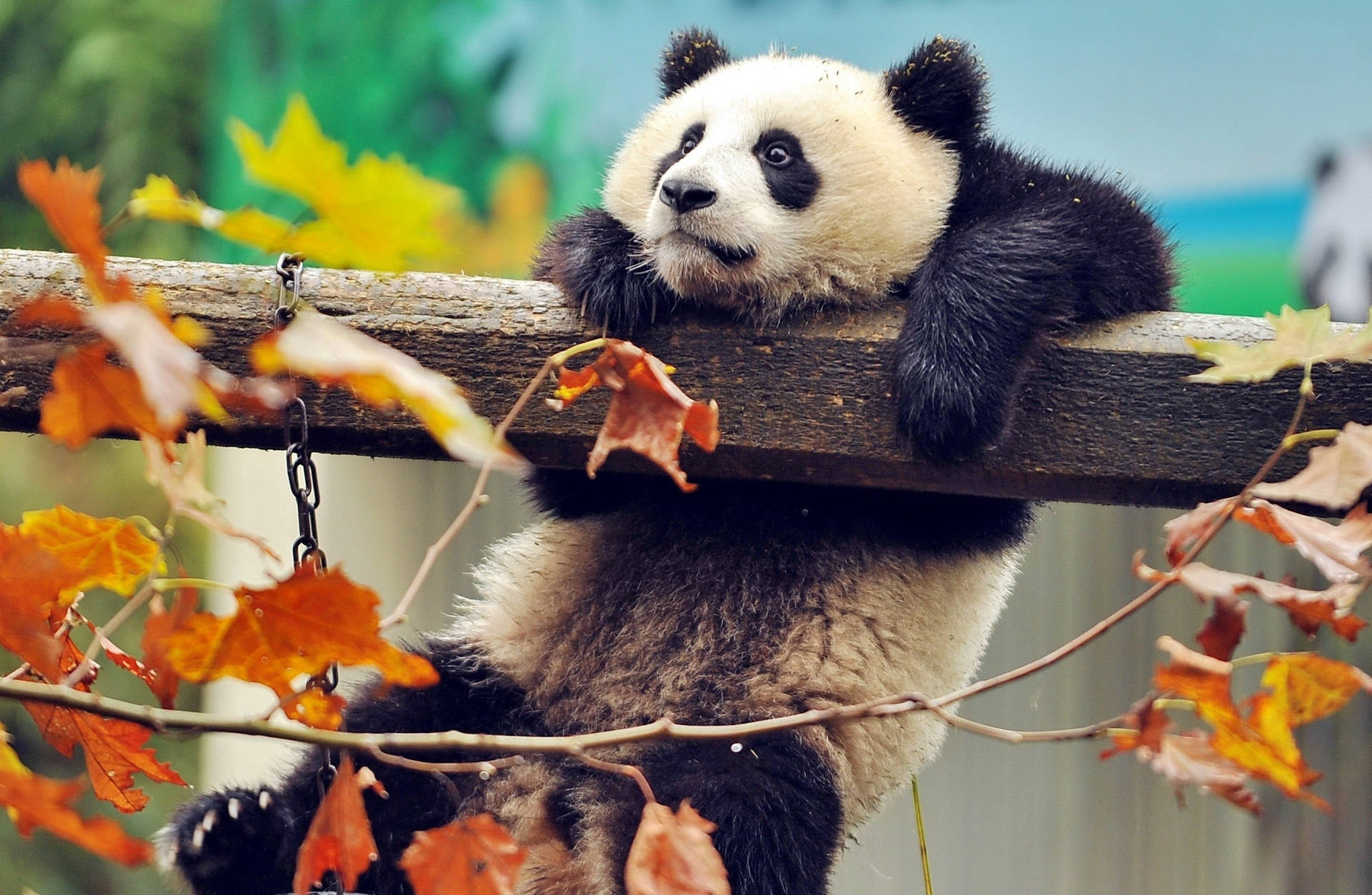Sleepiest animals are those that spend a significant portion of their lives resting or in deep slumber. These creatures have evolved to sleep for extended periods to conserve energy, regulate body temperature, and maintain their biological processes. Some animals sleep for survival, while others do so to conserve energy in environments with scarce food resources.
In this blog, we will explore the top ten sleepiest animals in the world, focusing on their sleep patterns, the reasons behind their lengthy sleep schedules, and how their natural environments have influenced these behaviors.
1. Sloth – 15 to 20 hours a day

The sloth is arguably the most famous and sleepiest animals in the world, spending up to 15 to 20 hours a day asleep. Found in the tropical rainforests of Central and South America, sloths have incredibly slow metabolisms, which is one of the reasons they need so much sleep.
Their energy is conserved by their leisurely pace, and they spend most of their time hanging upside down in trees, only coming down once a week to defecate. Their slow movements also make them less visible to predators, a key survival strategy in the wild.
Read : Top Ten Highest Grossing Concerts Worldwide in 2024
Sloths are not only the sleepiest animals, but they also have unique adaptations that help them sleep comfortably in treetops. Their long, curved claws allow them to grip tree branches securely, and their low-energy diet of leaves requires minimal exertion.
Read : Top Ten Countries Which Eat the Most Chocolate: Switzerland Tops the list
Despite being sluggish on land, sloths are surprisingly good swimmers. Their long hours of sleep ensure that they conserve energy for the few activities they do engage in.
2. Koala – 18 and 22 hours a day

Another contender for the title of sleepiest animals is the koala. Native to Australia, koalas sleep between 18 and 22 hours a day, making them one of the top sleepiest animals in the world.
Like sloths, koalas have slow metabolisms, and they spend their waking hours munching on eucalyptus leaves, which are low in nutrients and difficult to digest. This diet requires koalas to sleep for extended periods to conserve energy.
Koalas’ sleep habits are essential for their survival in the wild. The eucalyptus leaves they eat are also toxic in large amounts, so koalas have evolved specialized digestive systems that allow them to detoxify the leaves while they rest.
During their waking hours, koalas are solitary animals, and they spend most of their time climbing trees in search of food or shelter. Their long periods of sleep allow them to process their food efficiently and avoid predators.
3. Little Brown Bat – 19 to 20 hours a day

The little brown bat is a tiny mammal known for being one of the sleepiest animals in the animal kingdom. These nocturnal creatures sleep for about 19 to 20 hours a day, waking up only to hunt for insects during the night.
Bats are known for their unique sleeping positions, often hanging upside down in caves or trees. This behavior, combined with their extended sleep cycles, makes them a prime example of a sleepiest animal.
Bats’ long sleep patterns are essential for conserving energy, as their small bodies require efficient use of resources to maintain their high metabolism.
In colder months, many bat species enter a state of hibernation, where they sleep even longer to survive the harsh winter. During this time, their heart rate and metabolism slow significantly, allowing them to go without food for extended periods.
4. Virginia Opossum – 18 to 20 hours a day

The Virginia opossum is another of the world’s sleepiest animals, spending around 18 to 20 hours a day asleep. Native to North America, these nocturnal marsupials are known for their slow-moving nature and their ability to feign death when threatened by predators.
Like many of the sleepiest animals, Virginia opossums have slow metabolisms, which require them to sleep for long periods to conserve energy.
Opossums are opportunistic feeders, and their long hours of sleep allow them to store energy for nighttime foraging. They are solitary animals, and their primary defense mechanism, “playing dead,” allows them to avoid confrontations with predators.
Their long sleep cycles also help them stay safe, as they typically find secure hiding places to sleep during the day, reducing their exposure to potential threats.
5. Giant Armadillo – 18 hours a day

The giant armadillo, native to South America, is another contender for the title of sleepiest animal, spending up to 18 hours a day asleep.
These nocturnal creatures are known for their armored shells and their ability to dig extensive burrows where they sleep and hide from predators. Armadillos’ long sleep patterns help them conserve energy for their nighttime activities, which involve digging for insects, their primary food source.
Giant armadillos are solitary animals, and their burrows provide them with a safe place to sleep during the day. Their long hours of rest allow them to maintain their slow metabolisms, which are necessary for their survival in the wild.
Armadillos are also known for their ability to roll into a ball when threatened, using their armored shells as protection from predators. Their sleep habits, combined with their unique physical adaptations, make them one of the sleepiest animals in the animal kingdom.
6. Python – 18 hours a day

The python, one of the largest snakes in the world, is also one of the sleepiest animals, spending up to 18 hours a day resting. Pythons are ambush predators, meaning they conserve energy by remaining motionless for long periods before striking at their prey.
Once they capture and consume their prey, pythons can go days or even weeks without needing to eat again, allowing them to sleep for extended periods between meals.
Pythons’ long sleep cycles are essential for their survival, as they rely on their ability to conserve energy for hunting. These snakes are cold-blooded, which means they need to regulate their body temperature by basking in the sun or seeking shade.
Their sleep patterns are closely tied to their environment, as they often rest in warm, secure locations where they can maintain their body temperature while conserving energy.
7. Tiger – 16 and 20 hours a day

The tiger, one of the most powerful predators in the animal kingdom, is also one of the sleepiest animals, sleeping between 16 and 20 hours a day.
Tigers are solitary hunters, and they rely on their strength and stealth to catch prey. Their long sleep cycles allow them to conserve energy for the intense bursts of activity required for hunting. Like many big cats, tigers are crepuscular, meaning they are most active during dawn and dusk, spending the rest of the day resting.
Tigers’ sleep patterns are essential for maintaining their energy levels, as they require large amounts of food to sustain their massive bodies.
After a successful hunt, tigers often sleep for extended periods to digest their meals and recover from the exertion of hunting. Their long sleep cycles also help them avoid unnecessary confrontations with other predators, as they typically rest in hidden or secluded areas.
8. Night Monkey – 17 hours a day

The night monkey, also known as the owl monkey, is a nocturnal primate that sleeps for about 17 hours a day. These small, tree-dwelling monkeys are found in the forests of Central and South America, where they spend their days sleeping in the safety of tree hollows or dense foliage.
Night monkeys are highly adapted to their nocturnal lifestyle, with large eyes that allow them to see in the dark and navigate their environment at night.
As one of the sleepiest animals among primates, the night monkey’s long sleep patterns are essential for conserving energy during the day.
Their nocturnal behavior helps them avoid predators and competition for food, as they are active when other animals are resting. Night monkeys are social animals, often sleeping in groups to stay safe from predators, and their long hours of sleep help them maintain their social bonds and prepare for nighttime foraging.
9. Humans – 7 to 9 hours a day

While humans may not be the first species that comes to mind when thinking of the sleepiest animals, we spend a significant portion of our lives asleep.
On average, humans sleep for about 7 to 9 hours a day, although this varies depending on age, lifestyle, and individual needs. Sleep is crucial for humans, as it allows our bodies and minds to rest, repair, and regenerate.
While we may not sleep as much as some of the other animals on this list, humans are still one of the sleepiest animals in terms of the total time spent sleeping over a lifetime.
Human sleep patterns are influenced by a variety of factors, including biology, environment, and culture. While some people thrive on just a few hours of sleep, others require much more to function properly.
Sleep is essential for cognitive function, memory consolidation, and overall health, making it a vital part of human life. In fact, humans spend about one-third of their lives sleeping, which is why we are considered one of the sleepiest animals, despite our active lifestyles.
10. Lion – 16 to 20 Hours a day

The lion, often referred to as the “king of the jungle,” is also one of the sleepiest animals in the predator world, sleeping for 16 to 20 hours a day. Lions are social animals, living in prides that consist of multiple females, their offspring, and a few males.
Their long sleep cycles allow them to conserve energy for hunting and defending their territory. Lions are most active during the cooler hours of the day, such as early morning and late evening, while spending the hottest part of the day resting in the shade.
Lions’ sleep patterns are essential for their survival, as they require large amounts of energy to hunt and maintain their social structure. After a successful hunt, lions often sleep for extended periods to recover from the physical exertion of chasing and capturing prey. Their long hours of rest help them stay safe from potential threats, as they typically rest in hidden areas away from the eyes of rival predators and humans.
The sleepiest animals in the world each have unique adaptations and reasons for their extended sleep patterns. From the sloth and koala to the mighty tiger and night monkey, these creatures demonstrate the incredible diversity of life on Earth and how different species have evolved to thrive in their environments. Sleep is a vital part of their lives, allowing them to conserve energy, avoid predators, and maintain their overall health.
Understanding the sleepiest animals not only fascinates us but also provides insight into the complexities of animal behavior and evolution. The study of these animals can help researchers and conservationists develop strategies to protect them and their habitats, ensuring that future generations can continue to learn about and appreciate the unique sleep habits of these remarkable creatures.

